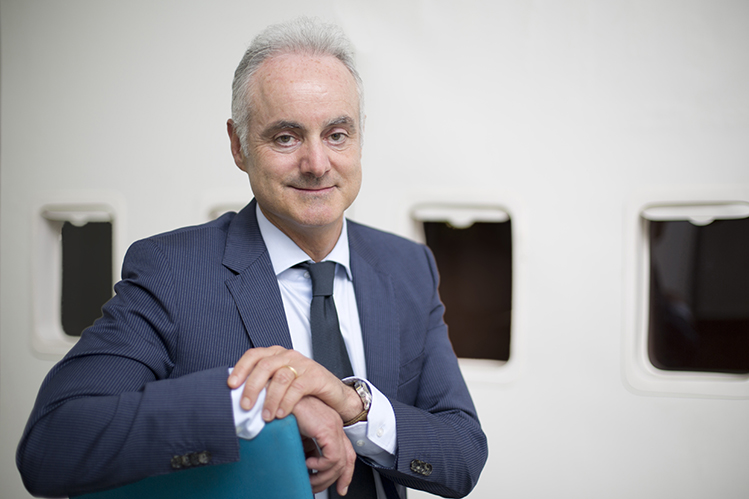SITA is a Platinum Sponsor at this year’s ACI Airport Exchange. Ahead of the event, Sergio Colella, SITA President Europe, spoke to Marta Dimitrova about the importance of collaborative innovation to fully unlock the potential of new technologies.
To deliver a seamless passenger experience, collaboration between all stakeholders – airlines, airports, governments and industry suppliers is essential.
“Today’s airports are increasingly complex environments with increasing levels of regulation and security, and rapid growth,” says Sergio Colella, SITA President Europe. “This is increasingly having a negative impact on the passenger, resulting in a bumpy journey across all the steps in the airport, from check-in to boarding. To drive new levels of efficiency, and in turn cost savings across the airport, the various players need to work together to drive a seamless process and experience for passengers.”

Sergio Colella, SITA President Europe: “We have the technology to automate, and even eliminate, tedious processes. We can use biometrics for the passenger journey, passengers can simply smile at a camera and move through the airport. Similarly, for border management governments don’t need to reinvent the wheel, the technology exists today.”
Colella points out that technology is instrumental in bringing the various airlines, airports and control authorities closer together and to ensuring the travel experience becomes less onerous in future. “For example, with collaboration between all stakeholders – airlines, airports, governments and industry suppliers – identity management solutions, including biometric systems, could eliminate the need for multiple and manual checks across the journey. This creates a more seamless passenger experience, while helping airlines and airports across the world meet the variety of regulations from governments and border agencies.”
One such example of successful collaboration between airlines, airports and governments, is the recent trial of SITA Smart PathTM at Orlando International Airport. Earlier this year, SITA worked with the airport authority, British Airways and US Customs and Border Protection to incorporate the US biometric departure check for British Airways’ customers.
“We developed a facepod where passengers merely step up to the camera without the need to present a passport or boarding card. Essentially your face becomes your passport. The real beauty of this technology is that it combined a government and airline check into a single process.”
The system makes passenger boarding quicker and easier, while incorporating the new secure biometric exit checks. As a result, British Airways is boarding flights, of almost 240 customers, in around 15 minutes. Such was the success of this project, that Orlando Airport is deploying this solution to all international flights.
“Imagine, if every airline, airport and government embraced this technology, no matter which airport or airline you travel with, you are recognised and identified as a passenger simply by your face. This would be the real power of collaboration.”
SITA sees this collaboration extending beyond the passenger experience to supporting airports to better manage ever-growing passenger numbers. “We strongly believe that by working with our customer airlines and airports, we can find new, more robust solutions to industry problems.”
Take disruption. Every year disruption – from flight delays to weather-related problems – costs the air transport industry an estimated $25 billion (€22bn). The impact of this disruption was identified as one of the biggest challenges facing air transport today and an area where SITA could invest to help its members and the wider industry find a solution.
“In 2017, SITA began working with a major Asian airport to find a solution that would provide better insight into aircraft arrival and departures. Key challenges facing the airport were that they had limited visibility of arrival traffic and high variability of landing times due to weather and congestion. Using machine learning and AI, and applying this to commonly available flight and weather data, we were able to predict with an accuracy of within 15 minutes for 80% of flights six hours before their arrival.”
Colella notes that this collaborative innovation has in part led to the development of a new SITA solution which will help airlines and airports around the world better predict disruption, benefiting the wider air transport industry.
“These two examples are a great demonstration of our collaborative approach to innovation,” he says. “We have shown that at SITA, we are able to bring together the various players in the industry, helping the airport sector become more efficient and in turn improve the experience for the passenger.”







